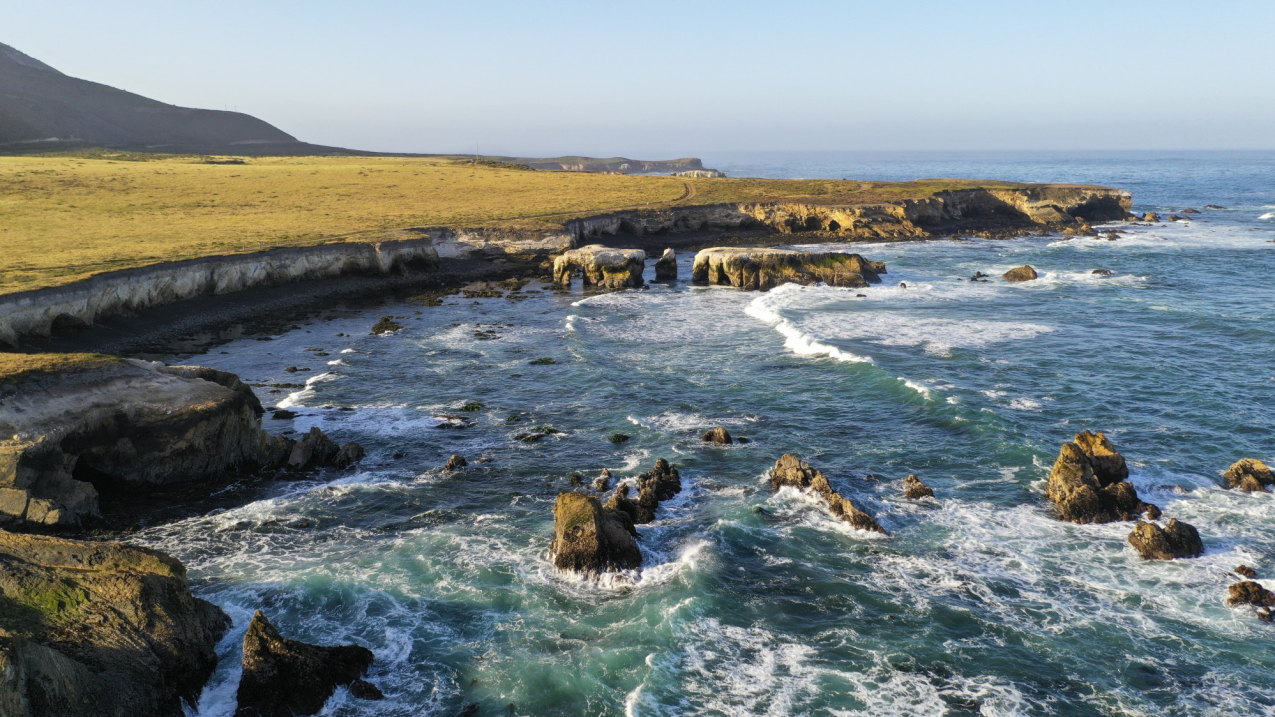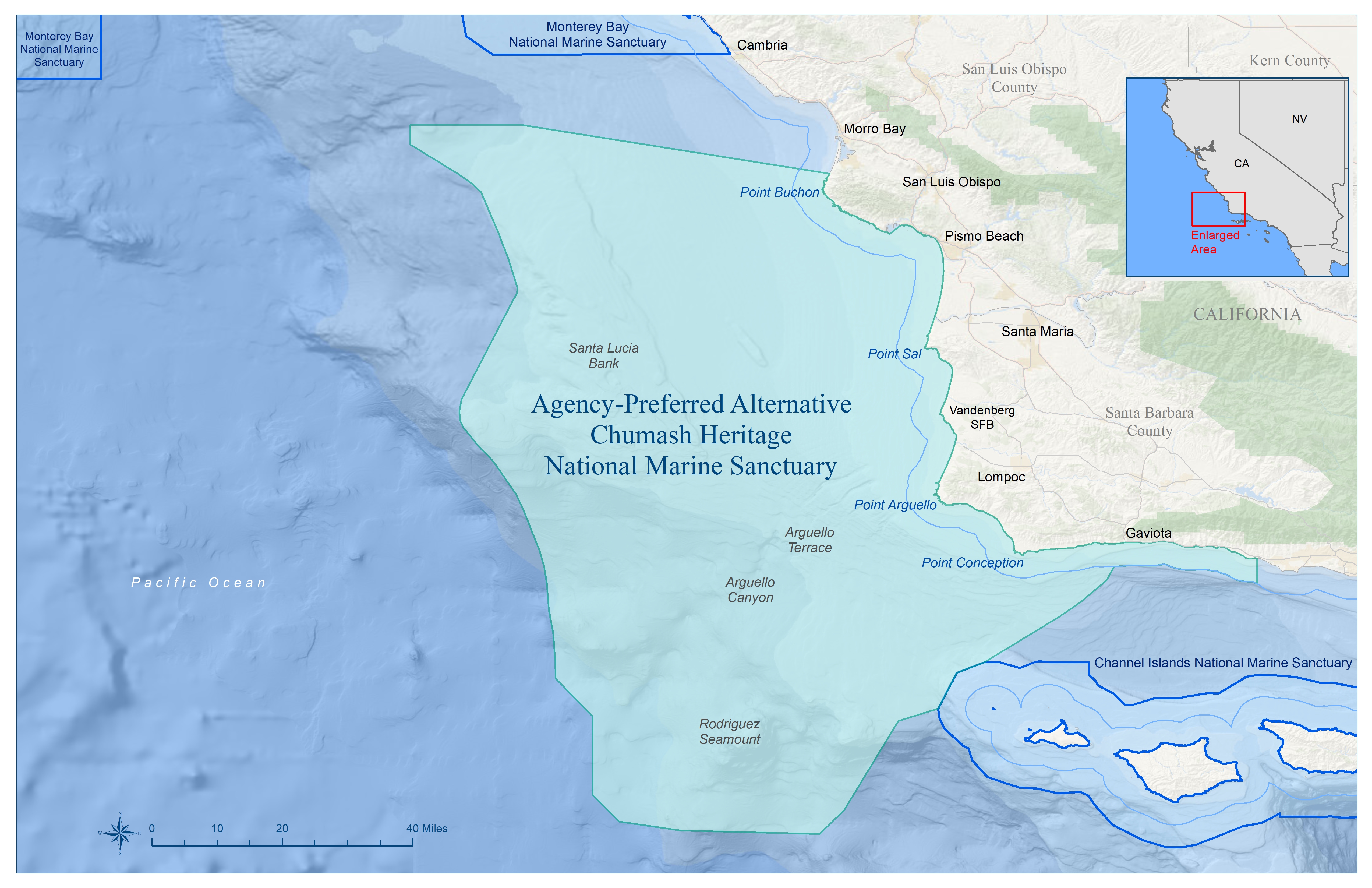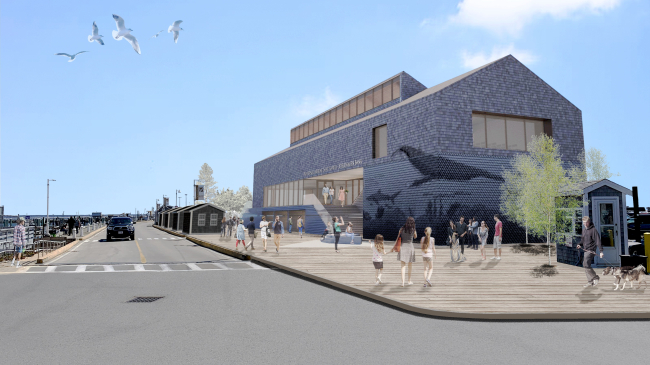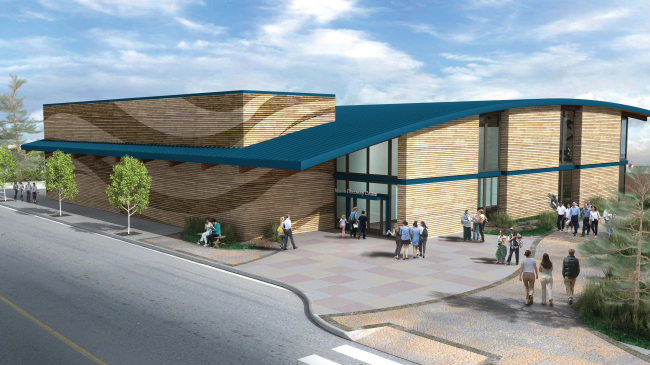NOAA seeks public comment on Chumash Heritage sanctuary draft proposal, which if designated would be nation's 16th national marine sanctuary

A view of the proposed Chumash Heritage National Marine Sanctuary near Montana de Oro State Park in San Luis Obispo County, California. (Image credit: Robert Schwemmer/NOAA)
Today, following input from tribal nations, state and federal agencies, Indigenous communities, and the public, NOAA released a proposal to designate a 5,617-square-mile area offshore of San Luis Obispo and Santa Barbara counties in central California as Chumash Heritage National Marine Sanctuary. Since day one, President Biden has launched the most ambitious climate and conservation agenda in history. This designation would advance the Biden-Harris Administration’s America the Beautiful Initiative, which is supporting locally led conservation efforts across the country with a goal to conserve and restore 30 percent of U.S. lands and waters by 2030.
The agency’s proposed boundary for Chumash Heritage National Marine Sanctuary would stretch along 134 miles of coastline from Hazard Canyon Reef, south of Morro Bay, to an area just south of Dos Pueblos Canyon — the site of one of the largest historical Chumash villages along the Gaviota Coast. This proposed designation is the first Indigenous-led nomination for a national marine sanctuary, reflecting the Biden-Harris Administration’s commitment to honoring tribal nations, respecting Indigenous knowledge and advancing co-stewardship.
“Since taking office, President Biden has launched the most ambitious climate and conservation agenda in history. As part of this historic commitment, the Biden-Harris Administration is advancing collaborative conservation and collaborative management, and prioritizing the input and insight of tribal leaders during the development of this sanctuary proposal,” said U.S Secretary of Commerce Gina Raimondo. “In addition to protecting critical ecological and cultural sites, this proposed sanctuary would advance President Biden’s commitment to conserving at least 30 percent of U.S. ocean waters by the end of the decade.”

Under the National Marine Sanctuaries Act, the proposed Chumash Heritage National Marine Sanctuary would protect the area’s marine life, ecosystems, archaeological sites, and cultural sites. Its unique features — including rocky intertidal zones, a submarine canyon, and upwellings of cold nutrient-rich seawater — are teeming with marine invertebrates, massive kelp forests, sea otters, harbor seals, whales, dolphins, important bird rookeries, and other marine life. Importantly, the proposed sanctuary sits between existing marine protected areas, creating ecological connectivity and protected corridors for fish and wildlife. It would be the first new sanctuary since 1994 that would be managed for biodiversity conservation as part of the National Marine Sanctuary System.
“Chumash National Marine Sanctuary embodies the values of President Biden’s America the Beautiful initiative, and his commitment to supporting locally-led protections for cultural and natural sites across the country,” said White House Council on Environmental Quality Chair Brenda Mallory. “The ocean is facing some of the most severe impacts from climate change, and under the President’s leadership we are taking action to ensure our waters and the marine life that call them home are protected for generations to come.”
In July 2015, a broad coalition of community leaders, organizations and businesses, led by the Northern Chumash Tribal Council, submitted a nomination offsite link to NOAA for a Chumash Heritage National Marine Sanctuary. In 2020, during the five-year review of the nomination, then-Senator and now Vice President Kamala Harris joined her colleagues in the California congressional delegation in urging NOAA to move the proposal into the designation phase as soon as possible. NOAA began the process towards designation in 2021.
The proposed sanctuary management plan and regulations would guide community-based management and ecosystem-based management–including a framework for tribal and Indigenous collaborative management– to balance marine conservation efforts with other uses, including renewable energy opportunities in nearby waters. The preferred boundary accommodates an area beyond the sanctuary where subsea electrical transmission cables from nearby development of offshore wind could be built, and includes a permit pathway to support additional cables within the proposed sanctuary. NOAA will continue to closely coordinate with federal and state agencies to ensure that the sanctuary designation process aligns with the Biden-Harris Administration and State of California’s efforts to advance responsible offshore wind deployment.
“The proposed sanctuary represents a momentous opportunity to involve, recognize, and celebrate Indigenous peoples’ values, knowledge, traditions, and modern day cultural connections to the area,” said Rick Spinrad, Ph.D, NOAA administrator. “It also advances the goals of the Biden-Harris Administration’s America the Beautiful initiative, which recommends expanding the National Marine Sanctuary System, as well as supporting Indigenous- and locally led conservation.”
A detailed description of the proposed sanctuary, as well as additional information about opportunities to provide public comment, can be found on the website for the proposed Chumash Heritage National Marine Sanctuary.
“The proposed sanctuary is rich in marine life and includes kelp forests, rocky shores, sandy beaches, a globally-significant ecological transition zone and important offshore features that have been important to Chumash and other Indigenous communities for more than 10,000 years,” said John Armor, director, NOAA’s Office of National Marine Sanctuaries. “The sanctuary would also enhance conservation of numerous rare and endangered species that depend on this area, including snowy plovers, black abalone, southern sea otters, blue whales and leatherback sea turtles.”
The nomination was crafted based on an earlier proposal from the 1980s from state and local leaders for a sanctuary in this region. The new proposal envisioned coupling NOAA’s standard sanctuary management framework with Indigenous knowledge to expand opportunities for marine resource conservation, economic development, marine research, educational programming, and community engagement.
As part of this designation proposal, NOAA proposes a framework for tribal and Indigenous collaborative management that would integrate tribal and Indigenous perspectives from the community into the stewardship of key areas and cultural priorities. Tribal and Indigenous community members would have opportunities to join in sanctuary decision-making processes and cultural programming through the sanctuary’s advisory council, working groups of the advisory council, a new Intergovernmental Policy Council, and joint project agreements. Input from local area tribes and Indigenous communities was integral to the development of the draft framework, and NOAA will continue to seek their ideas and assistance during the next steps of the designation process.
The public can comment on the sanctuary proposal through Oct. 25, 2023, through the Federal eRulemaking Portal. The docket number is NOAA-NOS-2021-0080. In addition, NOAA will host two in-person and one virtual public comment meetings during which members of the public can offer oral comments. To facilitate public understanding of NOAA’s proposed action, NOAA will also host two in-person informational workshops and one virtual informational webinar approximately two weeks in advance of the public comment meetings. Detailed information on the dates, times, and locations for public meetings is available at: https://sanctuaries.noaa.gov/chumash-heritage/.
NOAA follows a well-established designation process for marine sanctuary proposals. After NOAA receives written and oral public comments, it will address and respond to those comments as it makes a determination if final designation of the proposed sanctuary is warranted and, if so, what NOAA program and management actions are necessary. A final action on designation is expected in the middle of 2024.



